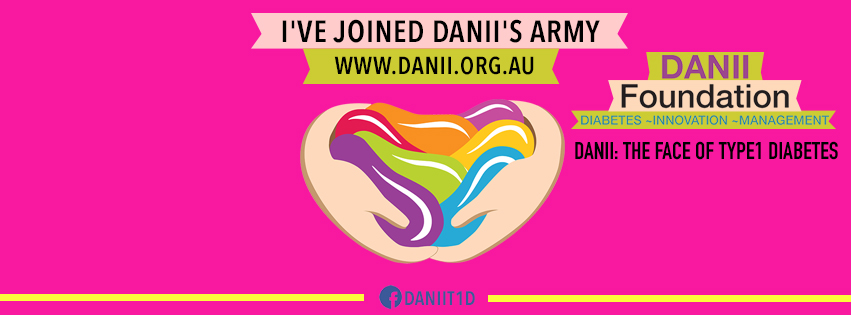
Q: Who is the DANII Foundation
A: The DANII Foundation was formed in 2012 after the tragic unnecessary death of Type One Diabetic (T1D), Daniella Meads Barlow at the age of 17 as a result of nocturnal hypoglycaemia, Dead in Bed Syndrome (DIBS). DANII is Australia’s pre-eminent foundation for the prevention of life threatening Dead in Bed Syndrome (DIBS) and the only organisation dedicated solely to the improvement of the safety and quality of the lives of T1D’s.
Q: What is Type 1 Diabetes?
Type 1 diabetes (T1D), unlike Type 2 is a degenerative autoimmune disease. Despite significant government investment there is currently no reliable data on either what prevents or causes T1D. Around 140,000 Australians live with T1D. Considering half of all T1D are diagnosed before the age of 18 it is an issue of considerable concern for young people.
Q: What is the DANII Foundation seeking?
A: Safety and quality of life for Type 1 Diabetics. It is not enough to simply wait for a cure. As a result of this focus DANII has established an Australia wide consumer campaign to make life-saving remote alert technology for T1D’s affordable and as a result reduce unnecessary complications and complex morbidity associated with poorly managed T1D.
Q: What is Continuous Glucose Monitoring?
A: CGM is a sensor attached to a monitor worn by a T1D that provides continuous updates on a diabetics blood sugar. Some CGM’s can be linked to insulin pumps. Some are also compatible with Nightscout, which allows a parent of carer to track a diabetics blood glucose levels via a pebble watch, CGM monitors have sensors that alert the wearer and via Nightscout a carer.
Q:How many are affected in Australia?
A: There are 140,000 T1D’s in Australia. Considering many are children and adolescents, T1D effects many thousands more.
Q:What is the cost of CGM versus current diabetes management?
The cost of a CGM is between $1200 and $1800 per year. The sensors are a consumable and need to be changed every 7 days. The cost of sensors is between $4000 and $5000 per year. This sensor cost is what DANII is seeking government funding for.
The financial cost to the Australian taxpayer is also significant. While the direct cost of diabetes is estimated at around 1.7 billion, the Australian National Diabetes Strategy estimates the full cost of diabetes may be as high as $14 billion, and includes reduced productivity, absence from work, early retirement, premature death and bereavement.[1]
Diabetes complications substantially increase the cost of providing healthcare to a person with diabetes. Evidence shows the cost of providing healthcare to a person with diabetes and macro-vascular and microvascular complications rises by $11,287 per annum compared to a person with diabetes and no complications.[2]
Q: Is Dead in Bed a real risk
Indeed, a particular devastating outcome in (typically) young people, for which severe hypoglycaemia is implicated, is sudden unexpected overnight death called “Dead-in-Bed” syndrome. It is estimated that “Dead in Bed Syndrome” accounts for between 4.7 and 27.3% of deaths to T1D’s.[3] [4] [5][6][7][8][9][10][11][12][13]In real terms this means anywhere between 7,000 and 28,000 Australians go to bed every night not knowing if they will wake the next morning. The number of parents and close family members constitute many thousands more, living with the daily dread. The great news is CGM can remove this risk!
